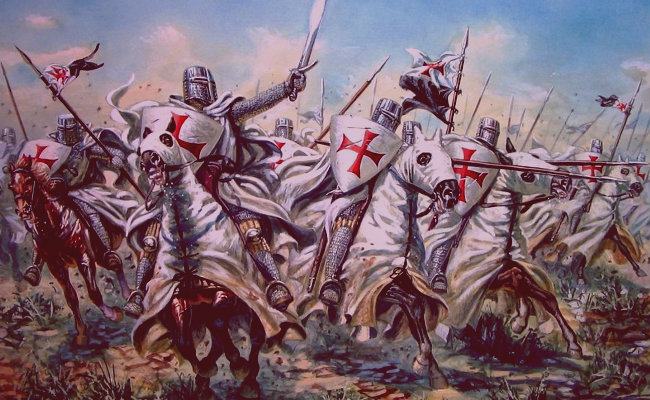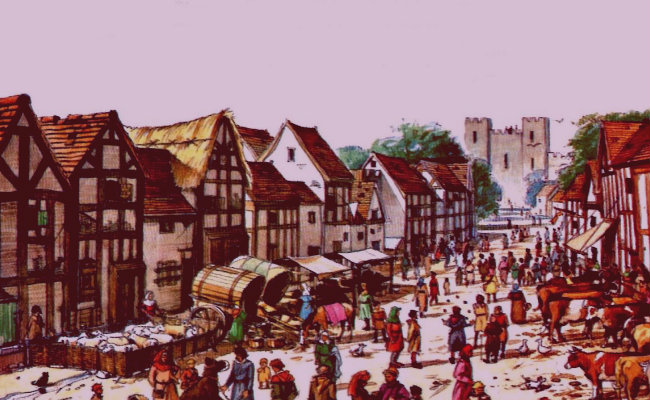Within this period of time, the human being experienced great changes at the cultural and religious level that conditioned their behavioral state. There were also momentous changes that determined the fate of various regions.
Today, we wanted to bring you all the middle age information that you must know, so that you can detect what customs we adopt as a society and remain today, what beliefs we keep from this time period and what importance it had for the destiny of humanity.
What is the Middle Ages?

It is the time period that includes the final years of the disintegration of the Western Roman Empire, until the Modern Age, which began after Christopher Columbus discovered America.
The stage of obscurantism or dark age, was very oppressive for man. Long periods of violence directly affected the life of the individual thanks to the permanence of the church in the social powers, and to the need of this to impose a single order.
On the other hand, it had influences in the history of art thanks to the construction of buildings with different architectural orders.
In this period, artistic movements flourish thanks to the communicative needs that man experiences, also the presence of God as the main object of fear is the cause of the great masterpieces of the Middle Ages.
The different arts such as literature, painting, architecture and sculpture, are the protagonists of the less violent positive side of this time.
Stages of the Middle Ages
Let's start by dividing the average age by stages, in all these periods of time there have been cultural and evolutionary changes.
High middle ages
The high Middle Ages included the XNUMXth to XNUMXth centuries, during which time the feudalism model prevailed, which consisted of the hierarchization of social classes that marginalized the less privileged.
Figures such as the king, the nobility and the clergy, determine the future of the commoners and peasants. The former had the power to decide on the future of the latter who were marginalized and humiliated by their "socio-economic condition."
Middle Ages
It includes the twelfth to fifteenth centuries, Christianity becomes more present thanks to the crusades. The economies of nearby countries are growing, where the twelfth and thirteenth centuries are the object of celebration and prosperity; but in later centuries the presence of pests and diseases plagued the medieval population.
What are the characteristics of the Middle Ages?

Next, we will give you in general lines the characteristics that define the middle age:
Church
He had complete control of the entire society, the fear of God and being sinners were the factors that conditioned and subdued the medieval populations.
Cultural life and evolution of art
Art becomes fundamental as the only means of expression for marginalized cultures, which is why the different artistic periods that comprise the Middle Ages can be found, where of course religion prevails as a portrait motif:
- Early Christian art: It is a religious art that portrays the life of Jesus, it was developed in a clandestine way so that the followers of the son of God were not killed. In this art, the hierarchy of the figures stands out, the divine presence was represented in a human way, the components of the work are located according to the law of frontality that was used for years in Egyptian art.
- Byzantine art: preserves the law of the frontality of the early Christian, sculpture, mosaic and painting stand out in this period of time. The use of vibrant colors is present in the painting, the frescoes on the heights of the basilicas stand out, and the culture has strong oriental influences.
- Islamic art: the geometrization of the figures predominates in all disciplines, with an emphasis on architecture and mosaics. It is iconoclastic and uses poor materials for its construction, it has a functional and decorative character that seeks to please the different gods of Islam.
- Pre-Romanesque art: It is much more modest than the other currents, it has Christian, Celtic and Germanic elements.
- Gothic art: large structures predominate in churches and basilicas. The main objective of the Gothic was to impose fear on people, that is why gargoyles can be observed at the entrances of churches as a symbol of evil, so people had more frequent religious habits.
- Renaissance art: the rebirth was the light that gave way to the gestation of the new currents, in this temporary period, the fear of God is almost completely eradicated and man begins to be the protagonist, conscious and object of study. Philosophy and the sciences that were left aside from the Greek cultures return.
Intellectual contributions
All the cultural periods included in the Middle Ages are important, however, the Renaissance was the most brilliant stage of humanity, where man could be a philosopher, architect, doctor, psychologist, painter, sculptor, writer, teacher, scientist and capable to tackle a myriad of trades and sciences. Basically the principles of medicine were developed within this historical period, where the nervous, circulatory, bone and muscle systems of the body are exposed for a better understanding, mainly of the diseases that plagued populations.
Agriculture
Among the characteristics of the Middle Ages, we find the development of agriculture as the main economic activity, since investment was proportionally different from the demand for food from harvests.
Feudalism
It was lived in almost the entire medieval period, feudalism consisted of the king giving land to the nobles and warriors so that the social outcasts who were under his slavery could work them. The profits belonged to the feudal that gave protection and refuge to the peasant.
Politics
The church was the great law, it gave the last word to the decisions that the people wanted to make for social welfare. His strategy was to impose the fear of God on people, denying them the right to literacy in order to have even more control over their lives. They were very dark moments for those who wanted to have access to religious information, only very wealthy and privileged men who were part of high religious communities, had access to such information.
Social inequality
The society was divided according to social classes, according to a pyramidal structure that determines the hierarchical order of who composes it thanks to the economic and social facilities that the societies had.
Fragmentation of power
Both the clergy and the monarchy were equally powerful, although they had different assignments within the kingdom, both could have access to the same benefits.
We hope that this post about the characteristics of the Middle Ages has been to your liking, since we have prepared it by collecting information and offering it to you in the simplest way possible.